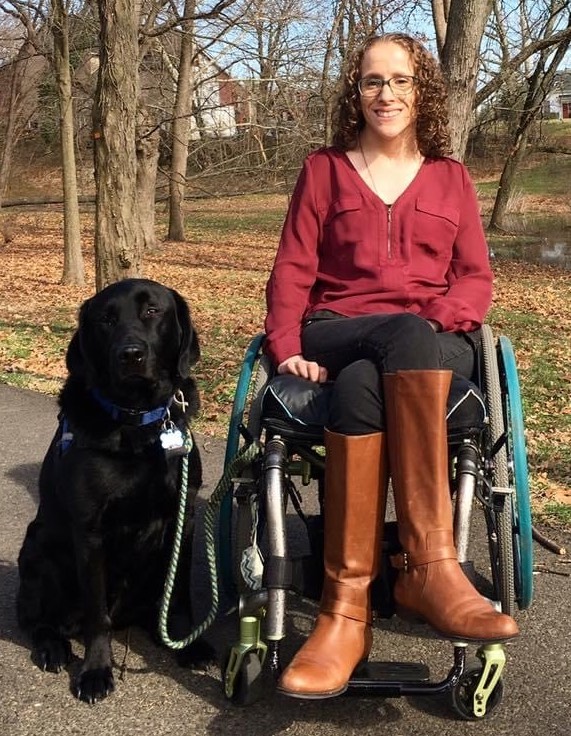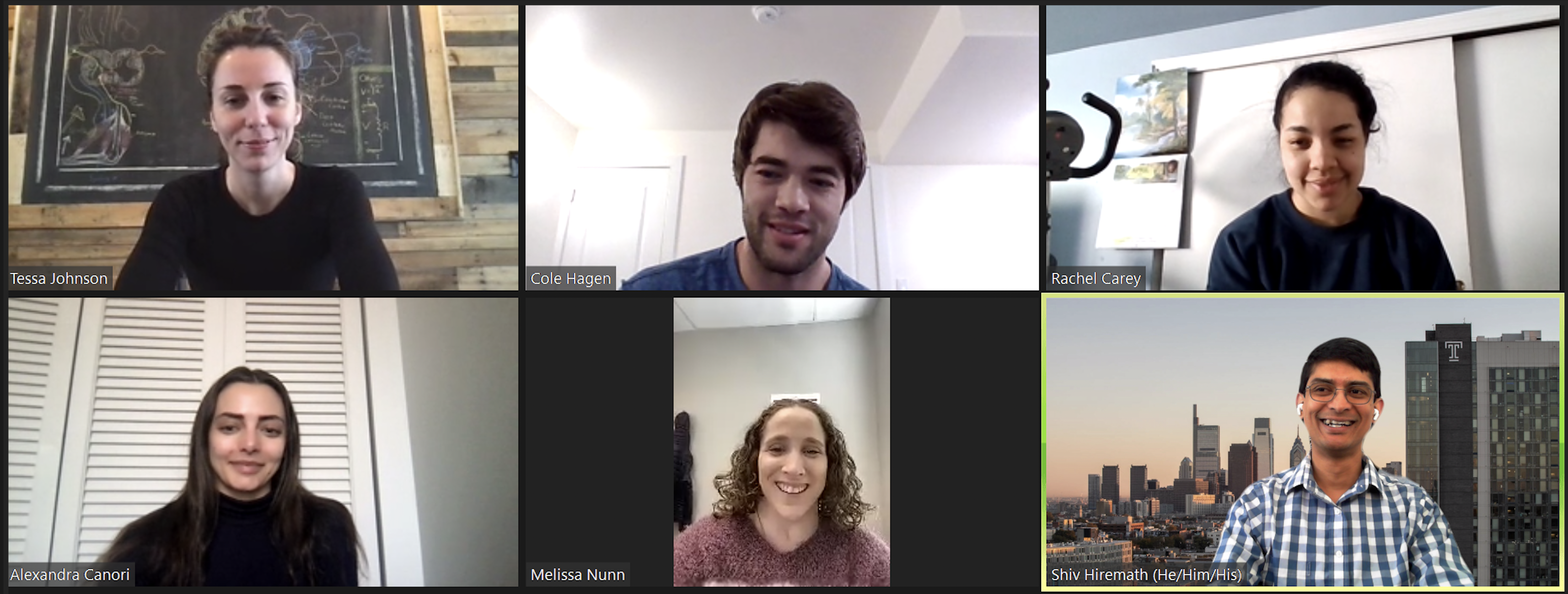Consumer Involvement



 Melissa Nunn
Melissa Nunn
Melissa Nunn makes it a point to say "yes” when she is asked to help. Living with spinal cord injury since she was a teenager, that attitude has helped her become an integral member of advocacy and research communities. Eager to help others with spinal cord injury during their recovery and reintegration into the community, she serves as a peer mentor through the Philadelphia Peer Mentorship Program at Magee Rehabilitation Hospital. She is also enthusiastic about research, signing up to participate in numerous studies and becoming a lived experience consultant whose perspective helps shape new and ongoing research. She lives out her belief that "people living with spinal cord injury should contribute to research in whatever way possible, because the studies are going to impact others who are injured after us or improve our own lives.”
In 2018, Ms. Nunn volunteered for a study in Dr. Shivayogi Hiremath's lab at Temple University exploring the use of smartphone and smartwatch activity trackers for wheelchair users. Not only was she a motivated participant, but she also provided valuable feedback about the real-world usability of the device. Her insightful questions and comments quickly made her a vital part of the research team. In fact, Dr. Hiremath started texting her to pitch ideas. Eventually, Ms. Nunn began regularly contributing to lab meetings and was named as an official lived experience consultant on multiple grants.
 Dr. Shivayogi Hiremath
Dr. Shivayogi Hiremath
One of those grants is a Fiscal Year 2020 Spinal Cord Injury Research Program (SCIRP)-funded Investigator-Initiated Research Award developing sensors to monitor reaching, grasping, and other upper limb activities in individuals with spinal cord injury. In this project, the research team is using the sensors both in the rehabilitation facility to monitor what participants are capable of doing and in the home environment to monitor what the participants are actually doing during everyday life. Capturing and comparing motor function in these two distinct settings will allow for better understanding of how gains observed in the rehab facility relate to functional capabilities of daily living. This data can help healthcare providers better understand how specific therapies impact real-world functioning and allow them to design improved rehabilitation plans.
According to Dr. Hiremath, Ms. Nunn's perspective as a participant in the previous activity tracker study was invaluable during the planning and design of this new venture. In the planning phase, her suggestions helped the team focus data collection on real-world outcomes and better communicate the clinical and research implications of the work. Before the study started enrolling participants, she even piloted all the assessments to help refine the logistics of the study sessions. Her perspectives on barriers to participation, as well as her insights on the mindset of the newly injured, are helping the team hone their recruitment and retention plans. Ms. Nunn continues to meet with the team regularly to provide feedback, help with implementation, and strategize to overcome issues, and she will contribute to interpretation and dissemination of the results as the study progresses. Dr. Hiremath greatly values the input of Ms. Nunn and others with lived experience in the research process. His own work was influenced strongly by his close friendship in college with an individual living with spinal cord injury. Seeing his friend's day-to-day challenges as a power wheelchair user shaped his understanding of the barriers that need to be addressed and helped refine his focus on how research can translate to a tangible impact in the real world. Appreciating how one person can impact a research philosophy from personal experience, Dr. Hiremath sees that both he and his trainees benefit from their interactions with Ms. Nunn. She helps them see the bigger picture of how their research can impact people's lives for the better. Integrating a person with lived experience into the lab can change how an entire team approaches research, influencing not only the work they do today but also the work they will do throughout their careers.

The Hiremath Personal Health Informatics and Rehabilitation Engineering (PHIRE) Laboratory team
Ms. Nunn also appreciates the opportunity to share. She knows firsthand that those without an injury, even those who care deeply about people with spinal cord injury, do not fully understand the daily challenges. Growing up, she had a cousin living with spinal cord injury but did not completely comprehend the barriers he faced until after her own injury. By participating on the research team, she feels she can increase understanding of the challenges faced by those with spinal cord injury and magnify the impact of the work in the real world.
SCIRP strongly encourages community collaborations, which help ensure research is responsive to the needs of people with spinal cord injury, their families, and their care partners. Ms. Nunn and Dr. Hiremath offer an excellent example of how such collaborations can be employed to optimize research impact. This model of integrating individual lived experience consultants like Ms. Nunn into the research team is only one method of community engagement. Valuable collaborations can take many forms. For example, they may involve partnerships with community-based organizations (such as advocacy groups, service providers, and policy makers) or consultation with community advisory boards composed of multiple stakeholders who can provide diverse perspectives related to the research project. Whichever form of community engagement is employed, the advice and consultation that collaborators from the spinal cord injury community provide help to maximize the translational potential and impact of the research. The more community partners say "yes” to helping research teams as Ms. Nunn continues to do, the more likely it is that successful research will lead to improvement in the lives of people living with spinal cord injury now and in the future.
Last updated Friday, March 7, 2025














